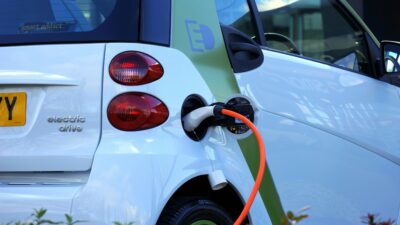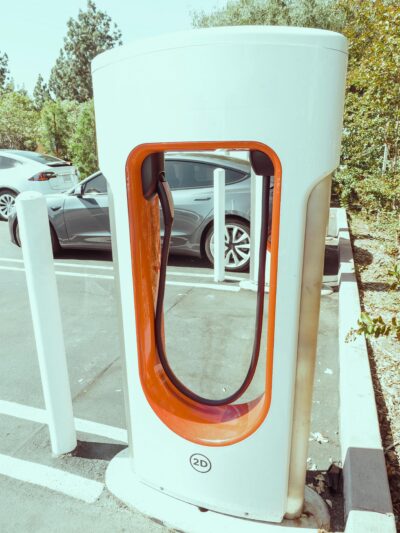 T.S. Rangarajan has been a volunteer at IEEE for over 21 years, serving in numerous roles. He is the recipient of the Lifetime Achievement Award for Section Chairs from IEEE India Council 2019 and the Lifetime Achievement Award Madras Section 2022. In this article, Rangarajan outlines what he feels are the primary issues facing electric vehicle (EV) penetration:
T.S. Rangarajan has been a volunteer at IEEE for over 21 years, serving in numerous roles. He is the recipient of the Lifetime Achievement Award for Section Chairs from IEEE India Council 2019 and the Lifetime Achievement Award Madras Section 2022. In this article, Rangarajan outlines what he feels are the primary issues facing electric vehicle (EV) penetration:
Electric vehicle (EV) penetration varies significantly across different countries, influenced by a range of issues.
The primary issues related to EV penetration include:
Infrastructure Development
- Charging Infrastructure: The availability and distribution of charging stations are crucial. In many countries, inadequate charging infrastructure hinders EV adoption.
- Grid Capacity: The existing power grids in some countries may not be able to support the increased load from widespread EV charging, necessitating upgrades and expansion.
Cost and Affordability
-

Upfront Costs: EVs typically have higher initial costs than internal combustion engine (ICE) vehicles. This can be a significant barrier in countries with lower average incomes.
- Incentives and Subsidies: Government incentives, subsidies, and tax benefits play a significant role in making EVs affordable. The absence or reduction of these incentives can slow down EV adoption.
Range Anxiety
- Battery Range: There are significant concerns about the distance an EV can travel on a single charge, known as range anxiety. This is particularly an issue in regions with vast rural areas or poor charging infrastructure.
Technological Issues
- Battery Technology: The development and availability of efficient, long-lasting batteries are critical. Advances in battery technology can reduce costs, improve range, and enhance the overall appeal of EVs.
- Supply Chain Issues: The supply chain for EV components, especially batteries, can be complex and vulnerable to disruptions.
Policy and Regulation
- Government Policies: Strong government policies and regulations supporting EVs, such as emission standards and bans on ICE vehicles, can drive adoption.
- Standardization: Lack of standardization in charging connectors and technologies can create compatibility issues, making it harder for consumers to switch to EVs.
Cultural and Behavioral Factors
- Consumer Awareness and Acceptance: In many countries, there still needs to be more awareness and understanding of the benefits of EVs. Cultural preferences for traditional ICE vehicles can also impede EV adoption.
- Driving Patterns: In some regions, long-distance driving is typical, which may be less feasible with current EV ranges.
Economic and Environmental Impact
- Economic Conditions: Economic stability and growth can influence consumers’ ability to purchase EVs. Recessions or economic downturns can reduce EV sales.
- Environmental Benefits: The degree to which countries prioritize environmental issues and climate change can impact EV penetration. Countries with strong environmental policies are more likely to support EV adoption.
Regional Variations
- Developed vs. Developing Countries: Developed countries often have more resources to invest in infrastructure and subsidies, leading to higher EV penetration. Developing countries may need help with these investments.
- Urban vs. Rural Areas: Urban areas tend to have better charging infrastructure and shorter travel distances, making them more conducive to EV adoption than rural areas.
Examples of Specific Country Issues
- United States: High initial costs and limited charging infrastructure in rural areas are significant barriers. However, government incentives and technological advancements are improving the situation.
- China: Strong government support and investment in EVs have led to high penetration, but air pollution and battery recycling remain challenges.
- European Union: Varies by country, with solid policies and incentives in countries like Norway and Germany driving high adoption, while other countries lag due to economic constraints and less developed infrastructure.
- India: High upfront costs, inadequate charging infrastructure, and lack of consumer awareness are significant issues despite government efforts to promote EVs.
Each country faces unique challenges and opportunities regarding EV penetration, shaped by its economic, social, and political context. Addressing these issues requires a multi-faceted approach involving technological innovation, policy support, infrastructure development, and consumer engagement.
Future of Electric Vehicles
The future of electric vehicles (EVs) looks promising and is driven by several key trends and factors:
 Technological Advancements:
Technological Advancements:
- Battery Technology: Continuous improvements in battery technology, such as higher energy densities, faster charging times, and longer lifespans, will make EVs more efficient and affordable.
- Charging Infrastructure: The expansion of charging networks and advancements in charging speeds are critical. Innovations like wireless charging and ultra-fast chargers will reduce range anxiety.
- Autonomous Driving: Integrating autonomous driving technology could revolutionize transportation, making EVs even more appealing.
Environmental Policies and Regulations:
- Governments worldwide are implementing stricter emissions regulations and providing incentives for EV adoption. Policies such as zero-emission vehicle mandates, subsidies, and tax breaks support this transition.
- International agreements and climate goals, like the Paris Agreement, push countries to reduce carbon emissions, encouraging a shift towards EVs.
Economic Factors:
- Cost Parity: The cost of EVs is expected to reach parity with internal combustion engine (ICE) vehicles as battery prices continue to fall and economies of scale improve.
- Market Growth: Increased competition among automakers and new entrants in the market will drive innovation and reduce costs.
Consumer Demand:
- Growing awareness of environmental issues and the benefits of EVs, such as lower running costs and reduced maintenance, is increasing consumer interest.
- Expansion of model offerings, including electric SUVs, trucks, and luxury cars, caters to diverse consumer preferences.
Energy Sector Integration:
- Renewable Energy: Integrating EVs with renewable energy sources like solar and wind will enhance sustainability.
- Smart Grids and V2G: Development of smart grids and vehicle-to-grid (V2G) technology will allow EVs to contribute to grid stability and energy storage solutions.
Global Adoption:
- Countries like Norway, China, and several EU nations are leading in EV adoption due to supportive policies and infrastructure.
- Emerging markets also show significant growth potential as costs decrease and infrastructure develops.
These factors suggest a future where EVs become the dominant form of personal and commercial transportation, significantly reducing global greenhouse gas emissions and fostering a more sustainable transportation ecosystem.



